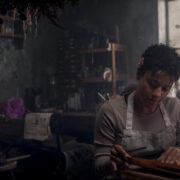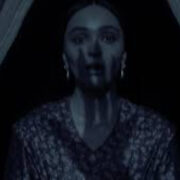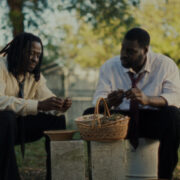VIVA: Barbi in VIVA-Land

Brian Walter is a college professor by day and a…
Okay, Hollywood, ready for a story pitch?
An innocent young woman named Barbi fights for her own identity in a world of stifling gender conventions.
Barbi’s story is told by an indie woman director whose mise-en-scene and script pay tribute to classic musicals. The director fills the screen with bright, primary colors, uses patently artificial sets, and allows her performers to employ self-conscious theatrical acting techniques that ironize the relationships depicted in the story.
Several songs are performed in the course of the narrative, including an artfully choreographed showstopper of a final number. In other words, there’s plenty of eye- and ear-candy.
And the story has conflict to spare. Barbi is paired with a tall, athletic blonde man more interested in his own physique and his manly pursuits than he is in her. She also has to deal with a variety of powerful men who seek to use her for their own personal gain.
Perhaps most winningly, Barbi is initially an innocent who undergoes a daunting education and emerges all the stronger for it.
But don’t worry. Yes, it’s a Girl Power movie designed to expose the obstacles that patriarchy forces women to navigate, but it delivers its serious message subtly while also catering to male viewers with a variety of in-jokes and satiric touches.
A 21st-century blockbuster, right?
We’re talking, of course, about Anna Biller’s 2007 debut film, Viva, whose protagonist shares a name (sans the final ‘e’) with the heroine of Greta Gerwig’s 2023 summer hit, Barbie. Biller’s debut anticipated the Warner Brothers tentpole by deconstructing the challenges women face in a male-dominated film industry and in American culture at large.
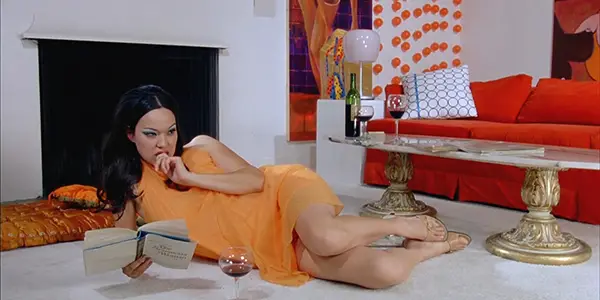
An art school graduate, Biller cast herself as the title character in her first feature, set it in the early 1970s in sun-splashed southern California, and took a hand in every aspect of production: writing the screenplay, designing and decorating sets, composing the score, even editing the final two-hour cut.
Satirizing the Sexual Revolution
But if it shares some aesthetic and character arc strategies with Barbie, Viva is a far darker, more unsettling film than Gerwig’s franchise-starter. In particular, Viva takes aim at the seamy underside of the sexual revolution of the 1960s and 70s, and it coopts strategies of contemporary exploitation media to emphasize the violence they inflicted on women.
Several scenes recreate cartoons from Playboy, mocking the fantasy of the magazine’s readers as dashing James Bonds being fawned over by nubile, scantily-clad women.
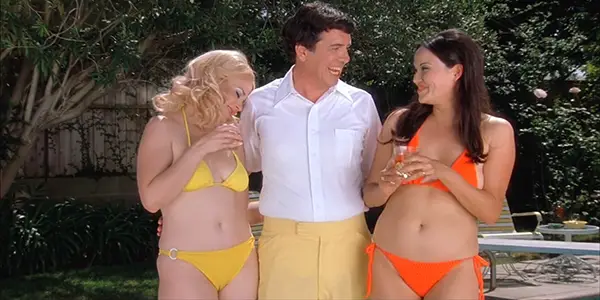
The film also skewers the flower-power generation by sending Barbi to a nudist colony where the all-white denizens sing cringy folk songs and make critical comments about bourgeois society, but which turns out to be just another breeding ground for masculinist exploitation of women.
One of the final scenes is set at an orgy with gaudy costumes, Mae West references, and a psychedelic animated sequence that renders the climactic sex act bizarre and aggressively “unrealistic,” an exercise in Brechtian alienation that leaves the viewer wondering not so much what they’re watching, but why they’re watching.
Perhaps most tellingly in contrast to Gerwig’s protagonist, Biller’s Barbi is under constant threat of sexual assault, a Candide adrift in a world devised more by the Marquis de Sade than by Mattel. Despite the surfing safari lighting and cheery, popsicle-bright colors, Viva is a Trojan Horse of a film: a blistering satire of patriarchal violence disguised as grindhouse sexploitation.
From Barbi to Viva
But like Biller’s second film, The Love Witch, Viva is most interested in exploring the rich philosophical territory of gendered subjectivity, female autonomy, and women’s visual pleasure. Despite everything she goes through, Barbi emerges whole and with better prospects for happiness at the end than she has at the beginning.
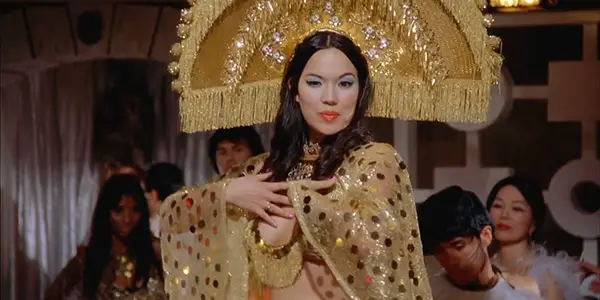
Key to Barbi’s characterization are the scenes of her alone, sometimes doing housewifely duty, but also enjoying pastimes that are sensual, imaginative, and leisurely. She debuts in the bathtub, paging through an erotic magazine while sipping a glass of wine.
The magazine’s name is Viva, and Biller films herself over the shoulder from a high angle to make sure viewers can see the photo spread of a man and a woman initially in fancy dress enjoying a meal al fresco before taking pictures of each other with a vintage camera au naturel. It’s the sort of scenario one might find in a harlequin novel, but tellingly, Barbi gravitates more toward visual than verbal pleasure.
What Viva, the “international magazine for women,” represents to Barbi is the key to the film. A vehicle for her fantasies of a love that is equally romantic and erotic, Viva also becomes Barbi’s new name when she takes her best friend Sheila’s advice to become more openly sexual and go out on dates arranged through an escort service.
Barbi wants to control her own sexual identity so she can write her own fantasy story, and taking the “Viva” name is her attempt to do that.
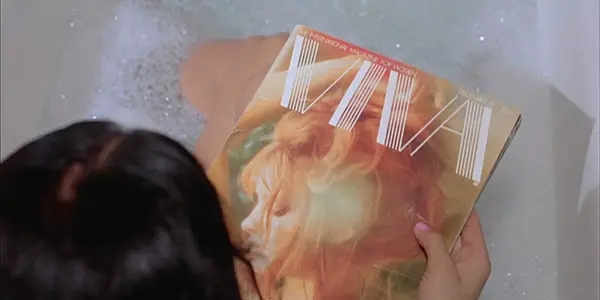
But neither in her marriage nor in the encounters she has with other men can Barbi ever feel safe as Viva. The heedless sexual aggression that Viva continually faces serves as a metaphor for Biller’s own view (as she has explained in her blog) of the violent stultification of women’s roles in movies after the 1960s.
Whatever freedoms the sexual revolution might have opened up for women, it left them perhaps even more available to exploitation by a patriarchal culture. Taking the pill and burning bras may have been gestures of rebellion, but those forms of rebellion could still be absorbed into a system that kept men in positions of socioeconomic power and women in positions of socioeconomic vulnerability.
And it is not only men looking to take advantage of women within a system devised to demean them. In keeping with a central insight from Kate Manne’s Down Girl: The Logic of Misogyny, some women in the film, including a modeling agency director and the older woman who recruits Barbi and Sheila to the escort agency, are also willing to prey upon other women for the sake of delimited rewards within the patriarchy.
The world Barbi inhabits is set up first and foremost for vertical power relations, and most of the people she meets are trying to get their piece of the pie, however small, particularly at women’s expense.
Visual Pleasure and Women’s Cinema
Fortunately, Biller allows Barbi to have relationships with other women, both friendly and romantic, that offer an alternative hope for her happiness. In particular, the final scene shows Barbi and Sheila dazzling a former exploitation producer not with the exposure of their bodies, but with the celebration of their talents as singers and dancers.
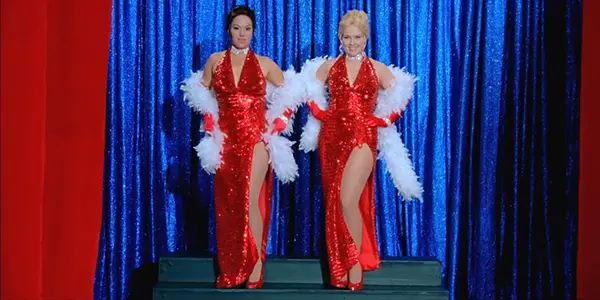
Both Barbi and Sheila have, by this point, resolved or moved on from challenges in their marriages, but more importantly, they have found a sweet spot together on the other side of their escort experiences. The duet they perform is a vision of possibility not just for female friendship in the midst of masculine power norms, but for female artistry – colorful, sensual, free, and joyful.
In the background of the happy ending is Laura Mulvey’s famous 1975 essay, “Visual Pleasure and Narrative Cinema,” which emphasizes the way mainstream movies have served up women as consumable objects of visual pleasure.
While Mulvey herself has since complicated her original thesis, Biller goes even further in Viva to emphasize the possibility of women as both subjects and consumers in their own right of visual pleasure, particularly of erotic visual pleasure.
Among other implications, her film insists on the difference between erotica and pornography, the one capable of creating art that feeds the imagination, the other transactional, reductive, and cynical.
As such, Biller’s Barbi makes for an instructive older sister to Warner Brothers’ much more ballyhooed heroine. In fact, the conflicts in the later film between Barbie and Ken and the contest for Barbie Land are all implicit in what happens to Biller’s Barbi (however different the forms they end up taking).
What Biller’s film finally shows is how both the depredations of patriarchy and the power of female imagination can be depicted honestly in a film that may not be kid-friendly but is certainly woman-friendly.
Biller’s beleaguered Candide goes through at least as much as Voltaire’s famous naïf, and she survives with her spirit intact and her imagination still running over. Barbi finally gets her Viva and transcends her too.
Does content like this matter to you?
Become a Member and support film journalism. Unlock access to all of Film Inquiry`s great articles. Join a community of like-minded readers who are passionate about cinema - get access to our private members Network, give back to independent filmmakers, and more.
Brian Walter is a college professor by day and a hopelessly sleepy college professor by night. His work has appeared in a variety of literary and film studies publications, and he appears as an 'old coot' interviewer with a magic camera in the final chapter of Donald Harington's final novel, "Enduring." He lives a short walk from the St. Louis Zoo with his remarkably patient, loving wife and a quirky assortment of canine and feline familiars.


